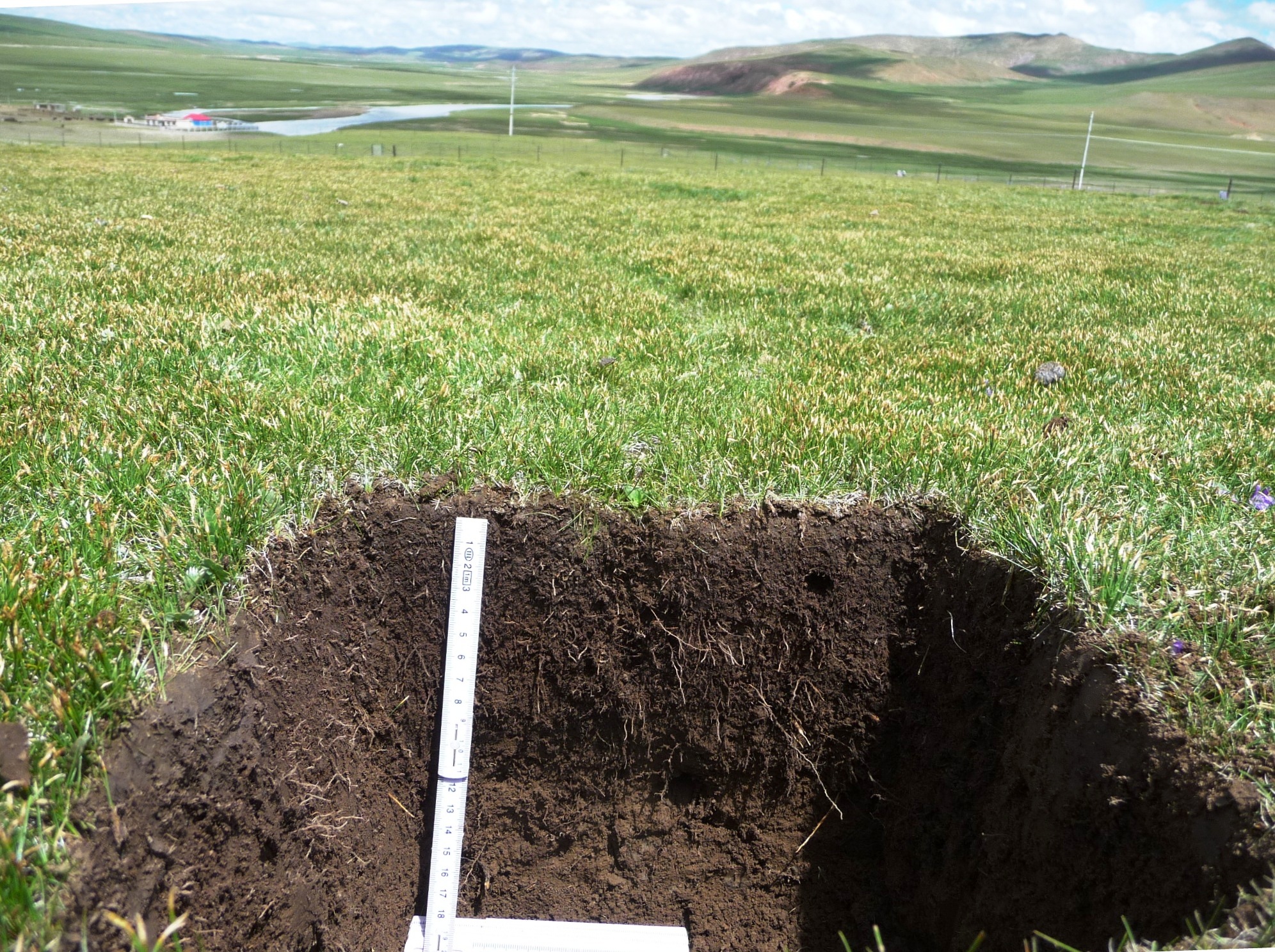Past and present human impact on Kobresia pastural ecosystems as deduced from soil organic matter studies
DFG . 2009 - 2015 . . . KU 1184/14-1, 14-2
Per Schleuss, Silke Hafner, Sebastian Unteregelsbacher, Yakov Kuzyakov
Kobresia pastures represent the world’s largest alpine ecosystem sustaining huge herds of domestic and natural herbivores. Specific features of Kobresia root mats provide unique mechanisms protecting against degradation even by moderate overgrazing and leading to a large carbon storage. These mechanisms, however, remain descriptive and partly speculative because they were never proven in process-based studies. By addressing the underlying mechanisms of Kobresia root mat functioning we will change the existing paradigm that the root mats is the negative feature of strong degradation by overgrazing. We will apply an array of morphological, chronological, isotopic (13C, 15N, bomb-14C) and biomarker approaches to explain the mechanisms of Kobresia root mat functioning and their alteration by climate change. Most of the studies will be carried out at KEMA experimental station and include 13C/15N labelling experiments to trace C and N turnover in individual root mat horizons under manipulated moisture and temperature. To extrapolate the results for a broad range of spatio-temporal conditions, the development of the Kobresia vegetation during the Holocene will be studied for representative sites of the Tibetan Plateau in sediment archives using novel biomarker techniques. Results will help to mitigate pronounced overgrazing and land degradation of Kobresia ecosystems under changing climate.
Kooperation:
Prof. Dr. Georg Guggenberger (Soil Science, University of Hannover)
Prof. Dr. Xingliang Xu (Institute of Geography, CAS, Beijing)

 Kobresia pigmea root mats
Kobresia pigmea root mats

